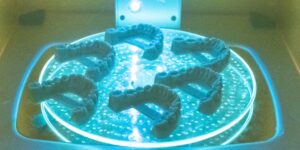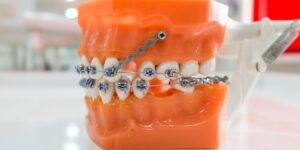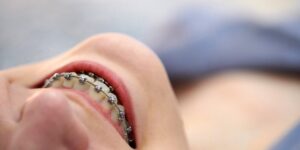Orthodontics Technology Poway

CONVENTIONAL VS DIGITAL IMPRESSIONS
No more goop, gagging, or discomfort. Using an iTero scanner, your Poway orthodontist can take a highly accurate digital impression of your teeth and jaw. The new technology completely eliminates the tray and putty impressions, where the experience is comparable to stuffing a big wad of gum in your mouth. The old technique is incredibly unpleasant and frequently results in taking multiple rounds of impressions that can be rejected, broken, or misplaced. The iTero scanner ensures a more accurate impression from the start, resulting in improved treatment and a more comfortable patient experience. Digital impressions also give you the ability to see your teeth instantly in 3D, improving communication during the consultation and treatment process.
HOW DOES IT WORK?
The iTero scanner digitally captures the structure of the teeth and gums using the latest optical technology. The scanner is a compact, hand-held wand. Once your Poway orthodontist begins the scanning process, it can be stopped and started as many times as necessary.
Your mouth is scanned with a radiation-free laser, and in as little as two to three minutes, the laser renders a digitally perfect, 3D impression of your teeth and soft tissue structures. Through digital software, you’ll then be able to follow the progress of the scans, including a 3D model of your teeth on our computer screen. The iTero scanner can be used for any orthodontic treatment, including Invisalign treatment Poway.

We are an impression-free office and have an in-house 3D printer we use to print digital models of your teeth. This helps us to fabricate retainers, study models, and custom clear aligners to move your teeth.

Using the most advanced orthodontic technology possible is just as important as staying up-to-date on the latest treatment techniques. Because our practice is dedicated to providing you with the safest and most convenient treatment options available, we utilize advanced digital X-ray technology in our office.
Digital X-rays provide several advanced imaging options designed to save time, provide clearer dental photos, and expose patients to less radiation than traditional X-ray technology.
Our practice is focused on making your Poway orthodontic experience as comfortable as possible. At your next appointment, we’ll be happy to answer any questions you may have.

TEMPORARY ANCHORAGE DEVICE (TAD)
Temporary anchorage devices, or TADs, are small titanium anchors used in certain orthodontic cases to help achieve quicker tooth movement with more efficiency and comfort. TADs may be used in addition to braces or as an alternative to headgear.
HOW ARE TADS PLACED?
A strong anesthetic is used to numb the gum tissue and the jaw surrounding the area where the TAD will be placed. Once the area is numb, your doctor will gently place the TAD through the gum tissue and firmly into the jawbone. The placing of a TAD is quick, and may be over before you know it. While your doctor is placing the TAD, you may feel slight pressure, but within a day, you will no longer be able to feel the TAD. Your TAD is removed once your treatment is complete, or when it is no longer needed to help straighten your teeth. Removal of a TAD is a comfortable procedure that takes just a few minutes.
WHAT CAN I DO TO RELIEVE DISCOMFORT CAUSED BY MY TAD?
If you do feel any discomfort from having your TADs placed, Tylenol® is recommended to help relieve your pain. If you continue to experience discomfort days after your treatment, please contact your dentist as soon as possible.
HOW CAN I KEEP MY TAD CLEAN?
A TAD can be cleaned the same way you clean your braces: by brushing your teeth at least three times a day. When your TAD is placed, we will also provide you with an antimicrobial mouthwash that you will need to use twice a day.
If you have questions about TADs, please contact our practice. We will be able to answer any of your questions and provide you with detailed information about your Poway orthodontic treatment.

Self-ligating braces use a built-in system to secure the archwire to the brackets. You may also hear this system referred to as self-ligating brackets.
This ligation method is different from traditional braces, in which tiny elastic bands or metal ties are applied to the brackets to hold the archwire in place. These are called ligatures.
When discussing self-ligating braces, it’s important to know that there are actually two types of self-ligating brackets: active and passive. Both types use a small door or gate-like mechanism to close over the bracket:
– Active brackets use a sliding spring clip mechanism. They press against the archwire, applying an active force.
– Passive brackets use a simple sliding mechanism. Unlike active brackets, they don’t press on the archwire.
